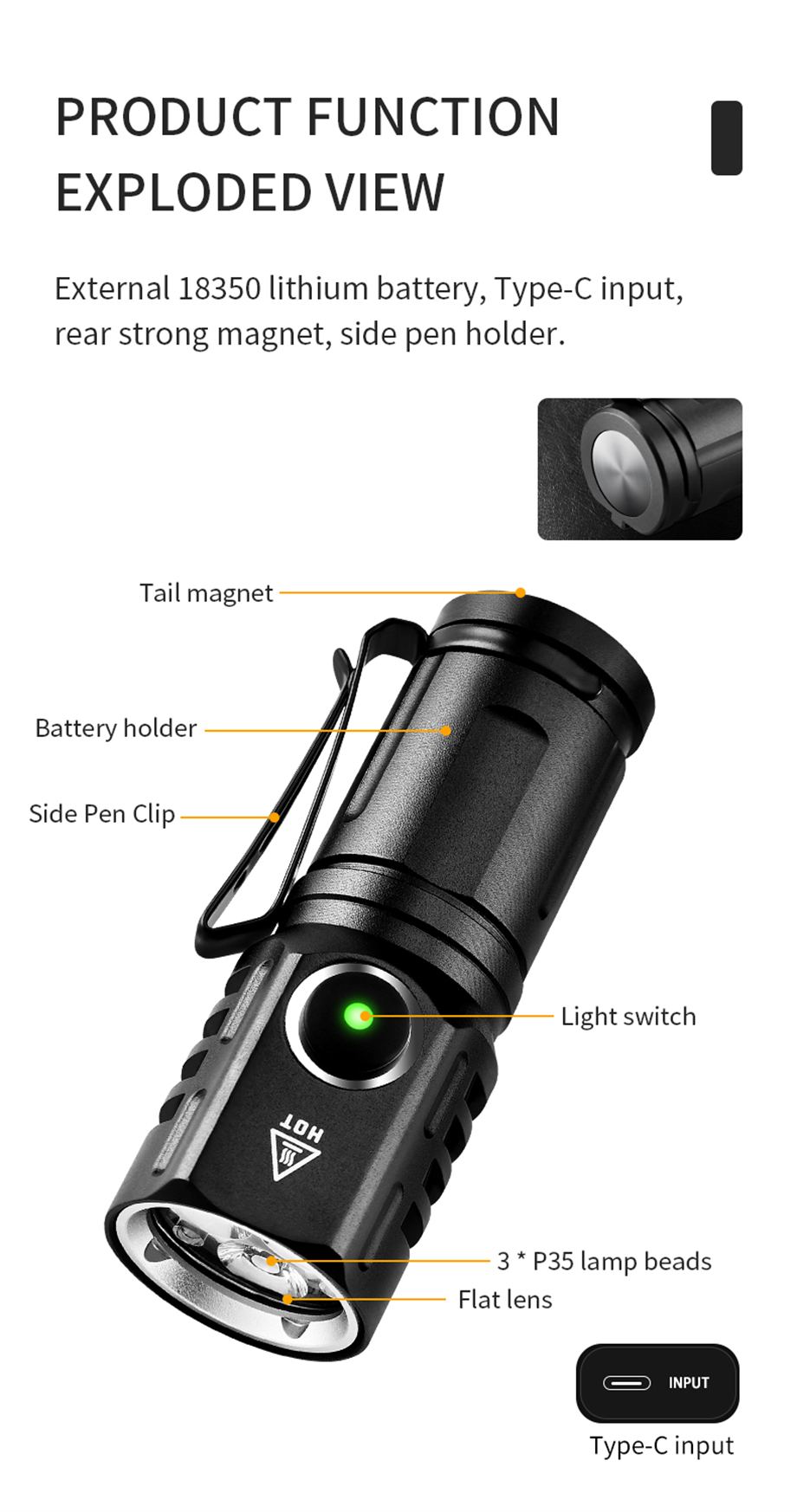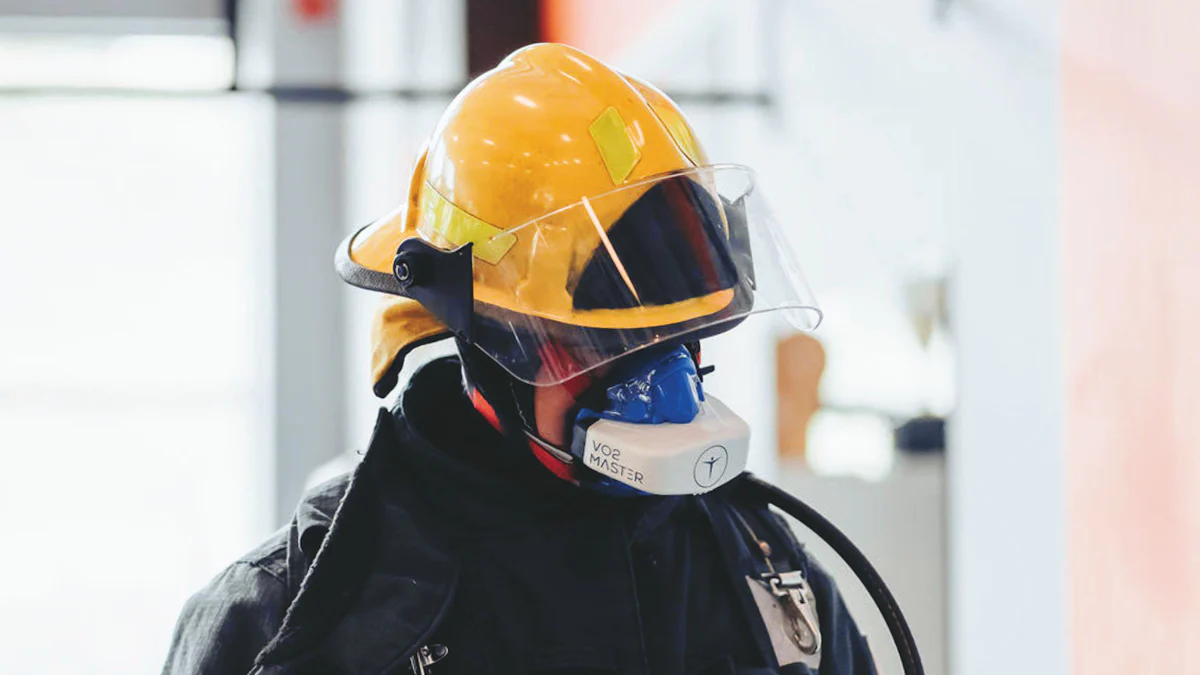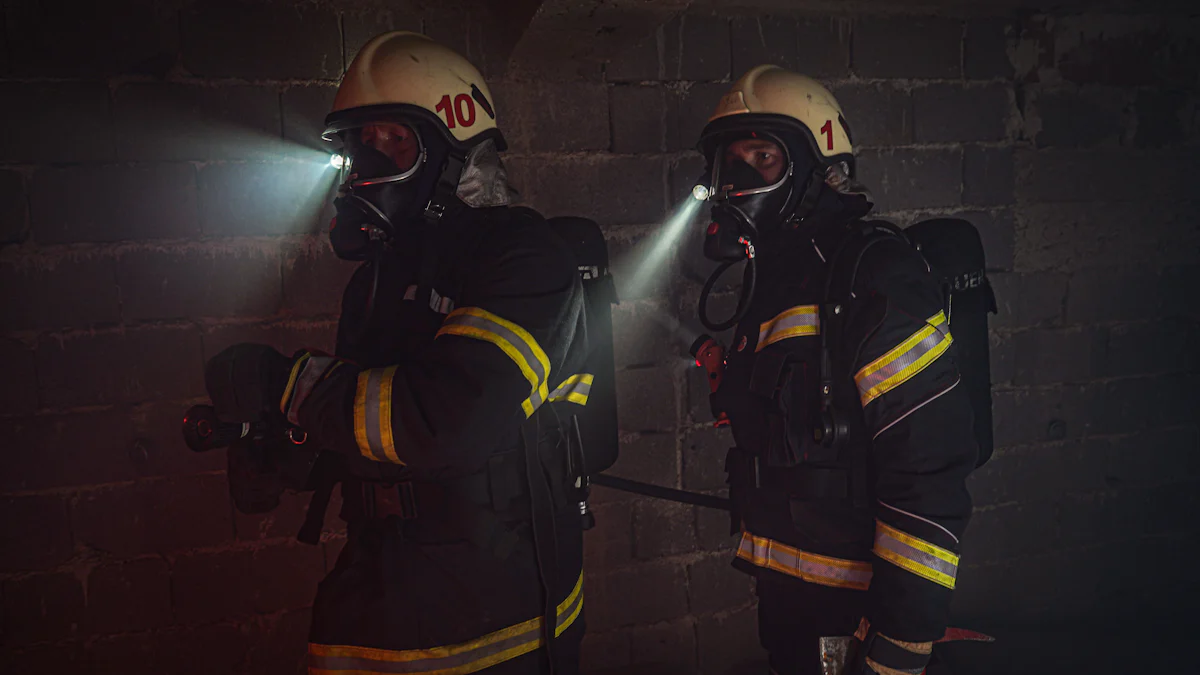How to Use Flashlights for Emergency Preparedness Outdoors

When you're outdoors, a flashlight can be your best friend in an emergency, showcasing how flashlights enhance safety during outdoor activities and emergencies. It lights up your path, helps you avoid hazards, and even signals for help when you're in trouble. Modern flashlights, especially those with LED technology, are incredibly bright, often reaching 500-800 lumens. This makes them perfect for lighting up accident scenes or large areas during search and rescue missions. They’re also essential for quick fixes in the dark, like repairing gear or navigating tricky terrain. Whether you're hiking, camping, or just exploring, a flashlight boosts your safety and keeps you prepared for the unexpected.
Key Takeaways
A flashlight is important for staying safe outdoors. It helps you see dangers, move in the dark, and call for help.
Pick a strong flashlight with bright light and SOS mode. This makes sure it works well during outdoor trips.
Use your flashlight safely. Don’t shine it in eyes and hold it tightly to avoid dropping it.
Bring extra batteries or another flashlight. This way, you’ll always have light when needed.
Learn how your flashlight works before going outside. Knowing how to use it can really help in emergencies.
How Flashlights Enhance Safety During Outdoor Activities and Emergencies

Improving Visibility and Reducing Risks
When you're outdoors, especially in low-light conditions, a flashlight becomes your go-to tool for staying safe. It helps you see clearly, whether you're navigating a dark trail or setting up camp after sunset. For example, if you're fishing early in the morning or late at night, a flashlight lets you handle your gear and move safely along riverbanks or lakesides. Hunters also rely on flashlights to track animals and move through dense woods without tripping over unseen obstacles. Some models even have red-light modes, which are perfect for avoiding disturbances to wildlife.
Trail runners benefit greatly from flashlights too. They illuminate uneven paths, helping you avoid rocks, roots, or other hazards that could cause injuries. Even if you're into geocaching, a flashlight can make your search more efficient by lighting up hidden treasures in dark or shaded areas. No matter the activity, having a flashlight on hand significantly reduces risks and keeps you prepared for the unexpected.
Spotting Hazards and Avoiding Injuries
Outdoors, hazards can pop up when you least expect them. A flashlight gives you the power to spot these dangers before they become a problem. Imagine hiking at dusk and suddenly encountering a fallen branch or a slippery patch of mud. With a flashlight, you can identify these obstacles and safely navigate around them. It also helps you check for critters like snakes or insects that might be hiding in your path.
If you're camping, a flashlight is invaluable for inspecting your surroundings. You can use it to check your tent for tears, ensure your food is stored securely, or even spot sharp objects on the ground that could damage your gear. By keeping a flashlight handy, you can avoid injuries and enjoy your outdoor adventures with peace of mind.
Enhancing Personal Safety in Low-Light Conditions
Low-light conditions can feel intimidating, but a flashlight gives you a sense of control. It lights up your surroundings, making you more aware of what's happening around you. If you're walking through a dark area, the beam of a flashlight can deter potential threats by signaling that you're alert and prepared. It also helps you stay visible to others, whether you're on a busy trail or crossing a road.
Some flashlights come with emergency modes like strobe or SOS, which can be lifesavers in critical situations. If you ever find yourself lost or in need of help, these features make it easier for rescuers to locate you. A flashlight isn't just a tool—it's a companion that enhances your safety and boosts your confidence when you're outdoors.
Choosing the Right Flashlight
When you're heading outdoors, picking the right flashlight can make all the difference. A high-quality flashlight isn't just about brightness; it's about reliability, versatility, and ease of use. Here's what you should look for when choosing one.
Key Features to Consider
Durability and Weather Resistance
Outdoor adventures can be unpredictable. You need a flashlight that can handle rough conditions. Look for models made from tough materials like aluminum or reinforced plastic. Check for an IPX-8 rating, which means the flashlight can survive heavy rain or even submersion in water. A durable flashlight ensures you’re never left in the dark, no matter the weather.
Brightness Levels and Beam Distance
Brightness matters when you're outdoors. A flashlight with over 200 lumens provides enough light for most activities. If you need to see farther, choose one with a longer beam distance. This is especially useful for spotting trails or hazards ahead. Some flashlights also let you adjust brightness levels, so you can save battery life when full power isn’t necessary.
Emergency Modes Like Strobe and SOS
Emergency modes can be lifesavers. A strobe mode can disorient potential threats, while an SOS mode (three short, three long, three short flashes) signals for help. These features add an extra layer of safety, especially in critical situations.
Types of Flashlights for Outdoor Use
Handheld Flashlights
These are the most common and versatile. They’re easy to carry and often come with adjustable beams. Handheld flashlights are great for general use, whether you're hiking or searching for something in your tent.
Headlamps for Hands-Free Use
Need both hands free? A headlamp is your best bet. It’s perfect for activities like climbing, fishing, or setting up camp. The light follows your line of sight, making it super convenient.
Lanterns for Area Lighting
Lanterns are ideal for lighting up larger spaces. They’re perfect for group camping trips or when you need to illuminate your entire campsite. Some even come with hooks or stands for easy placement.
Power Source Options
Rechargeable vs. Disposable Batteries
Rechargeable batteries cost more upfront but save money in the long run. You can recharge them hundreds of times, reducing waste and helping the environment. Disposable batteries are convenient for short trips but can add up in cost over time.
Solar-Powered and Crank Options
Solar-powered flashlights are eco-friendly and cost-effective. They charge using sunlight, making them perfect for remote areas. Crank flashlights, on the other hand, don’t rely on batteries at all. A few turns of the crank give you light, making them reliable during emergencies.
Tip: Consider carrying a flashlight with multiple power options. It ensures you’re prepared for any situation, whether you’re off-grid or just forgot to pack extra batteries.
Using a Flashlight Safely and Effectively
When you're outdoors, knowing how to handle your flashlight properly can make a big difference in your safety and the flashlight's performance. Let’s dive into some practical tips to ensure you’re using it the right way.
Safe Handling Practices
Avoid shining directly into eyes
Always point your flashlight away from people’s eyes. The beam can be surprisingly intense, especially with modern LED flashlights. Accidentally shining it into someone’s eyes can cause discomfort or even temporary blindness. This is especially important when you’re in a group or signaling for help.
Secure grip to prevent dropping
A dropped flashlight can break or stop working when you need it most. To avoid this, hold it securely with a firm grip. Many flashlights come with wrist straps—use them! They’re a simple way to keep your flashlight safe from accidental drops during hikes or other activities.
Pro Tip: Regularly inspect your flashlight. Check the batteries, clean the lens, and ensure everything is in working order before heading out.
Battery Conservation Tips
Use lower brightness settings when possible
Most flashlights have adjustable brightness levels. Stick to the lowest setting that gets the job done. This not only conserves battery life but also reduces glare, making it easier to focus on your surroundings.
Turn off the flashlight when not in use
It’s easy to forget and leave your flashlight on, especially during busy moments. Make it a habit to turn it off whenever you don’t need it. This simple step can save precious battery life, especially during emergencies.
Did You Know? Using your flashlight only when necessary is one of the easiest ways to extend its battery life.
Responsible Usage Outdoors
Avoid disturbing wildlife with excessive light
Bright lights can startle animals and disrupt their natural behavior. When you’re in the wild, use your flashlight sparingly and aim it downward. This helps you stay respectful of the environment while still ensuring your safety.
Use red light mode to preserve night vision
Many flashlights come with a red light mode. This feature is perfect for nighttime activities because it preserves your night vision. Whether you’re reading a map or checking your gear, the red light keeps your eyes adjusted to the dark while minimizing disturbance to others.
Reminder: Always choose the right flashlight for your activity. A headlamp might be better for hands-free tasks, while a handheld flashlight works well for general use.
Emergency Signaling with a Flashlight

When you're in emergency situations outdoors, a flashlight can be a lifesaver. It’s not just for lighting your way—it’s also a powerful tool for signaling and attracting attention. Knowing how to use it effectively can make all the difference.
Techniques for Effective Signaling
Using the SOS Pattern (Three Short, Three Long, Three Short Flashes)
The SOS signal is one of the most recognized distress signals worldwide. You can use your flashlight to flash three short bursts, followed by three long ones, and then three short bursts again. This pattern represents the Morse code for SOS. To make it clear, keep your flashes consistent and pause briefly between each sequence. A flashlight with at least 300 lumens works best for visibility in outdoor emergency situations. If your flashlight has a built-in SOS mode, use it for hands-free signaling.
Waving the Flashlight to Attract Attention
Sometimes, simplicity works best. Waving your flashlight in wide, deliberate arcs can catch the attention of rescuers or nearby people. This method works well in open areas or when you’re trying to signal someone at a distance. The movement of the light makes it easier to spot, especially in low-visibility conditions.
Tip: Practice these techniques before heading outdoors. Familiarity with them ensures you’ll act quickly and confidently during emergencies.
Increasing Visibility in Emergencies
Positioning the Flashlight to Illuminate Your Location
To make yourself more visible, place your flashlight in a high or open spot. For example, you can hang it from a tree branch or set it on a rock pointing upward. This creates a beacon effect, making it easier for rescuers to locate you. If you’re in a group, multiple flashlights positioned strategically can amplify your visibility.
Using Reflective Surfaces to Amplify Light
Reflective surfaces can boost your flashlight’s effectiveness. Shine your light onto a reflective object like a mirror, foil, or even a shiny piece of gear. This spreads the light over a larger area, increasing your chances of being seen. It’s a simple yet effective trick for emergency situations.
Communicating with Others
Flashing Light as a Signal for Help
In emergencies, you can use your flashlight to send signals to others. A quick series of flashes can indicate urgency, while slower flashes might mean you’re okay but need assistance. Consistency is key—stick to a pattern so others understand your message.
Coordinating with Group Members in Low Visibility
When visibility is poor, a flashlight becomes a vital communication tool. Use it to guide your group by pointing the beam in the direction you want them to go. You can also use Morse code for more detailed communication. A short flash represents a dot, and a longer one signifies a dash. Practicing this beforehand ensures everyone in your group knows how to interpret the signals.
Reminder: Always carry a flashlight with emergency modes like strobe or SOS. These features can make signaling easier and more effective.
Additional Tips for Outdoor Safety
When you’re heading into the wilderness, preparation is key. A little planning can go a long way in ensuring your outdoor safety. Here are some practical tips to help you stay ready for anything.
Packing Essentials
Carry extra batteries or a backup flashlight
You never know when your flashlight might run out of power. Always pack spare batteries or a backup flashlight. This ensures you’ll have light even if your primary one fails. A whistle or signaling device is another great addition to your gear. These items can be lifesavers in emergencies, helping you attract attention when needed.
Pro Tip: Keep your spare batteries in a waterproof bag to protect them from moisture.
Include a flashlight in your emergency kit
Your emergency kit isn’t complete without a reliable flashlight. It’s one of the most versatile tools for outdoor activities. Whether you’re navigating a dark trail or signaling for help, a flashlight is essential. Pair it with other must-haves like a first-aid kit, a multi-tool, and a map to cover all your bases.
Planning Ahead
Test your flashlight before heading outdoors
Before you venture into the wilderness, test your flashlight. Make sure it turns on, the beam is strong, and all modes work properly. This quick check can save you from unpleasant surprises later.
Familiarize yourself with its features and modes
Take a few minutes to learn how your flashlight works. Does it have an SOS mode? How do you adjust the brightness? Knowing these details ensures you can use it effectively when it matters most. Practice switching between modes so you’re not fumbling in the dark.
Tip: If your flashlight has a red light mode, try it out. It’s perfect for preserving night vision during outdoor activities.
Staying Prepared for Emergencies
Keep your flashlight easily accessible
In an emergency, every second counts. Store your flashlight in a spot where you can grab it quickly, like an outer pocket of your backpack or a belt clip. This simple step can make a big difference when you need light fast.
Regularly check and maintain your flashlight
A reliable flashlight needs regular care. Store it in a cool, dry place to prevent damage. If you’re not using it for a while, remove the batteries to avoid leaks or corrosion. Periodically check that it’s working and replace the batteries if needed. When disposing of old batteries, recycle them at designated centers to protect the environment.
Reminder: A well-maintained flashlight is your best ally in the wilderness. Don’t neglect it!
By following these tips, you’ll be better prepared for your next adventure. Outdoor safety starts with smart planning and reliable gear, so take the time to get it right.
A flashlight is one of the most important tools you can carry for outdoor safety and emergency preparedness. It lights your way, helps you avoid hazards, and even signals for help when needed. Choosing the right flashlight—one that’s durable, bright, and reliable—can make all the difference during your adventures. Always pack it in your emergency kit, test it beforehand, and keep it accessible. By staying prepared and using your flashlight effectively, you’ll be ready to handle any situation the outdoors throws your way.
FAQ
What’s the best flashlight for outdoor emergencies?
The best flashlight depends on your needs. Look for one that’s durable, weather-resistant, and has multiple brightness levels. A flashlight with emergency modes like SOS or strobe is ideal. Headlamps are great for hands-free use, while lanterns work well for lighting larger areas.
How do I conserve flashlight battery life during a trip?
Use the lowest brightness setting that works for your activity. Turn off the flashlight when you don’t need it. Rechargeable batteries are a great option for longer trips. If your flashlight has a red light mode, use it—it consumes less power and preserves night vision.
Can I use a flashlight to signal for help?
Absolutely! Use the SOS pattern (three short, three long, three short flashes) to send a distress signal. You can also wave the flashlight in wide arcs to attract attention. Positioning it in a high spot or using reflective surfaces can make you more visible.
Should I carry extra batteries or a backup flashlight?
Yes, always pack extra batteries or a second flashlight. Emergencies can drain your primary flashlight’s power quickly. A backup ensures you’re never left in the dark. Keep spare batteries in a waterproof bag to protect them from moisture.
How do I maintain my flashlight for long-term use?
Store it in a cool, dry place. Remove the batteries if you won’t use it for a while to prevent leaks. Regularly check the flashlight for damage and clean the lens. Replace old batteries and recycle them responsibly to protect the environment.
Tip: Test your flashlight before every trip to ensure it’s working perfectly.
See Also
Selecting The Ideal Multi-Color Flashlight For Outdoor Use
Understanding Various Situations For Flashlight Applications
Choosing The Best Flashlight Or Headlamp For Adventures
Enhance Safety Outdoors With Wholesale Mini Pocket Flashlights
